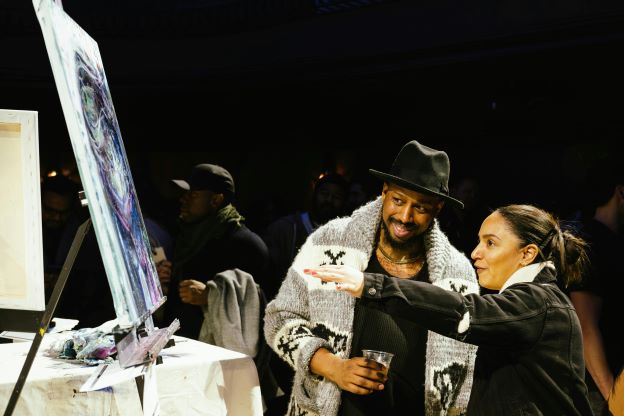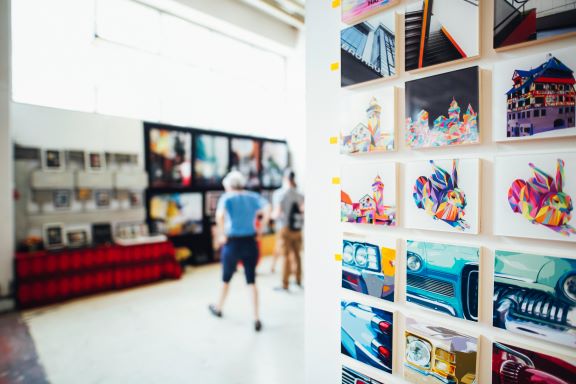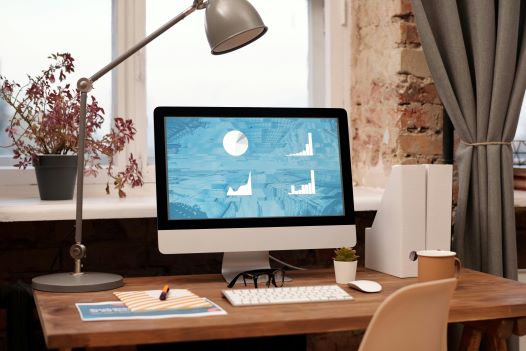
Founder Mark Zuckerberg recently announced his company’s name change from Facebook to Meta, citing a focus on the up-and-coming metaverse for the company’s future as the primary motivation.
Speculation is rife that the change is also intended to divert attention from all of the negative press about the company’s involvement in political manipulation and misinformation. But whether you believe that or not, the metaverse is an emerging technology that should be on your radar.
Learn what the metaverse is, how it connects to the real world and what the likely impact will be for the art world and artists.
Meta Quick Facts:
- Founded by Mark Zuckerberg (current CEO) and others in 2004 as Facebook at Harvard College in Boston to serve college students.
- Quickly became the dominant social media platform, overtaking Friendster, MySpace, and other earlier networks.
- Purchased Instagram in 2012.
- Purchased messaging platform WhatsApp in 2014.
- Purchased virtual reality goggle leader Oculus (Oculus Rift) in 2014.
- Had 2.85 billion users in March 2021. Source: Wikipedia.
Full list of companies purchased by Meta.
What is Virtual Reality?
Virtual Reality is a term for immersion in a computer-generated world where the user can look in any direction. The critical device for virtual reality is a set of goggles with digital displays in front of both eyes, and capable of producing these images fast enough to produce a 3D effect and also not make the user seasick due to lag.
Note above that Facebook purchased the leader in virtual reality goggle technology, Oculus, back in 2014.
What is the Metaverse?
CNBC’s Tom Huddleston, Jr. attributes the term to a 1992 sci-fi novel called Snow Crash, “which envisions a virtual reality-based successor to the internet. In the novel, people use digital avatars of themselves to explore the online world, often as a way of escaping a dystopian reality.”
If you missed Snow Crash, you might be more familiar with the book Ready Player One, or its film adaptation by Steven Spielberg. Digital Information World’s “Arooj Ahmed” calls the combination of Facebook’s Meta vision and bodysuit being developed by Carnegie Mellon “Ready Player One Coming to Life As the Metaverse Works On a Skin.”
If you think of the metaverse as any virtual world to be explored no matter how fanciful, a subset is what is known as “The Mirror World.” The Mirror World is the digital representation of real-world objects and exists today in an ununified state. Think about real estate apps that let you walk down a street and see the price of a home for sale or map apps that calculate how long it will take you from one intersection to another.
What is Augmented Reality?
Augmented reality is essentially putting a digital layer on top of the physical world. If you lived in a tech-centric area, you might have spotted people wearing the first version of Google Glass as early as 2013. Essentially, the glasses were a prototype that had an outward-facing camera that was always on, a lens that could receive projected images (a digital layer to the wearer), and a microphone for giving the device commands.
You can see how the first version worked here:
While significant advances were made, the project was not well-received by the public, in part, because the people wearing the glasses were essentially filming everyone in their surroundings at all times. Feedback was so negative that wearers of Google Glass 1 were even nicknamed “Glassholes.”
While the consumer version of Google Glass failed to take off, the project did spin off a version for industrial use that was helpful for hands-free access to documentation for complex manufacturing workers.
Since then, other devices have been developed such as Microsoft’s Hololens and Magic Leap.
To experience augmented reality, you don’t have to purchase a headset, however. Download Google Lens on an Android phone, and you’ll get digital information about what your device’s camera sees.
Why Will Virtual Reality and Augmented Reality Eventually Take Off?
The Facebook name change certainly seems like a strong signal that the company will focus more on its Oculus products and building out new virtual real estate from its Facebook, Instagram, and WhatsApp communities, but the broader world seems to be moving in this direction as well.
As humans, we thirst for more information and our primary mode of getting is the internet. What stands between us and the internet? QWERTY keyboards, a technology developed in the 1870s.
While they’re widely adopted and useful, they’re also slow and don’t exactly pass the “intuitive” experience test. The technology is due for an overhaul and devices that allow us to interface with the world in a more natural way make the most sense. We all know how to turn our heads and move our hands at birth.
How Will the Art World Be Impacted?
The Facebook name change is newsworthy because of the size of the company, but the long-term vision is more interesting. While the broader metaverse will eventually have a meaningful impact on the art world, even Meta’s Mark Zuckerberg believes that it will take billions of dollars of investment and many years to see widespread adoption. Keep in mind we’ve seen video games that allow users to “own” art within the game for decades without significant impact on the art ecosystem.
The first palpable impact on the art world from the metaverse will come in the mirror world. Artists and curators who put digital records of physical works on display on the internet AND…
- Make it easy to get from physical/visual art to the digital record
- Make it easy to get from digital records to physical locations of works of art
…can benefit greatly from first-mover advantage. Those that tie the two points mentioned above into a coherent story will benefit the most.
How Does ETChster Fit in the Metaverse?
We’ve been aware of the emerging metaverse and its mirror world subset for some time and building tools that work in the presentday, but will also get even better when a device comes along that makes access to the mirror world friction-free.
Maps – To make it easy for new acquaintances and patrons to find works on public display, our users add address that power maps of their work on their public profiles. See John W. Christian’s map of his murals.
ETC #s – To make is easy for members of the public who come across a public work of art that interests them, our users place ETC #s (and sometimes QR codes) so visitors can get directly to the story of a piece of art and then the story of the artist who created it.
What’s Next?
Did you:
- Have follow-up questions?
- Have other related thoughts that might be beneficial to the community?
Post them in the comments!
Are You a Visual Artist?
Get the art catalog app and connected, maintenance-free website your art business deserves. Forever Free & Pro versions.
Are You an Art Collector?
You’ll have access to a marketplace of global artists and phenomenal tools to organize your art collection. Forever Free & Pro versions.
You Might Also Enjoy…

Elevating Your Profile: Harnessing the Power of Reviews for Artists

Amplifying Your Art’s Reach: Harnessing the Power of Physical Backlinks

Mastering the Art Sales Funnel: Transforming Strangers into Buyers


